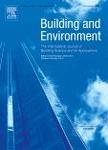版权所有:内蒙古大学图书馆 技术提供:维普资讯• 智图
内蒙古自治区呼和浩特市赛罕区大学西街235号 邮编: 010021

作者机构:Incheon Natl Univ Div Architecture & Urban Design Incheon 22012 South Korea Incheon Natl Univ Inst Urban Sci Incheon 22012 South Korea
出 版 物:《BUILDING AND ENVIRONMENT》 (建筑与环境)
年 卷 期:2021年第203卷
页 面:108066-108066页
核心收录:
学科分类:0830[工学-环境科学与工程(可授工学、理学、农学学位)] 08[工学] 0813[工学-建筑学] 0814[工学-土木工程]
基 金:Research Assistance Program (2020) in the Incheon National University Basic Science Research Program through the National Research Foundation of Korea (NRF) - Ministry of Education [2019R1F1A1060834]
主 题:Autoencoder Building automation systems (BAS) Fault detection and diagnosis (FDD) Residual-based Latent space-based District heating system
摘 要:Recently, data-driven fault detection and diagnosis (FDD) technologies have been studied extensively to detect the fault status early and maintain the health of building automation systems (BASs). Among the various algorithms for building FDD systems, an autoencoder (AE) is widely used as an unsupervised deep-learning method. Conventional AE-based FDD methods can use two types of information generated from the novel structure of the AE: (1) residual matrix (REM) and (2) latent space matrix (LSM). However, fundamental discussions about AE structures are rare, and the uses of the REM and LSM for building FDD models have seldom been compared. In this study, AE-based FDD methods are suggested. Quantitative comparisons were conducted under the designed fault conditions and real operational faults (hunting). AE-based fault detection models were designed using the AE latent space dimensionality. For fault diagnosis models, REM- and LSM-based models were used. Each model was then subdivided by the AE latent space dimensions. The detection model performances showed no meaningful differences according to the designed cases. However, for the diagnosis models, the performance of the LSM-based models was 14.4% better than that of the REM-based models. Additionally, the dimensions of the latent space caused the model performance to vary as much as 21.5%. Two main issues-training data dependency and latent space dimensionality-were found and investigated to improve the performance of AE-based FDD. Modeling guidelines are suggested based on the findings. These are valuable for successful FDD application with limited working sensors and datasets in real BASs.